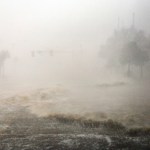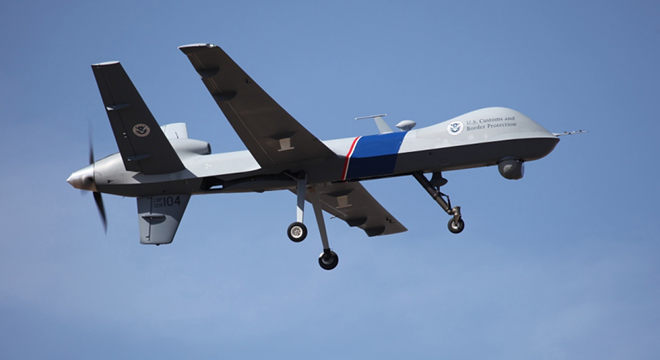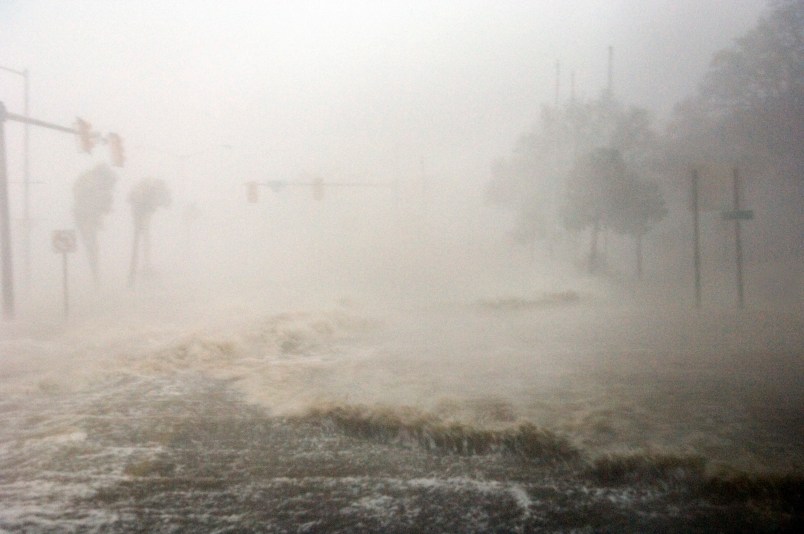SANAA, Yemen (AP) — Three U.S. drone strikes killed a total of 12 suspected al-Qaida militants Thursday, a Yemeni military official said, raising to eight the number of attacks in less than two weeks as the Arab nation is on high alert against terrorism.
The uptick in drone strikes signals that the Obama administration is stepping up its efforts to target Yemen’s al-Qaida offshoot — al-Qaida in the Arabian Peninsula — amid fears of attacks after the interception of a message between its leader and the global leader of the terror network.
Since July 27, drone attacks have killed 34 suspected militants, according to an Associated Press count provided by Yemeni security officials.
The Yemeni military official said the first drone attack killed six alleged militants in central Marib province, while the second killed three more in the al-Ayoon area of Hadramawt province in the south. The third killed three others in the al-Qutn area of Hadramawt, he said. All the airstrikes targeted cars, added the official, who spoke on condition of anonymity because he was not authorized to talk to the media.
The high alert in Yemen came after authorities revealed an al-Qaida plot to target foreign embassies and international shipping lanes in the Red Sea.
The U.S. and Britain evacuated diplomatic staff this week after learning of a threatened attack that prompted Washington to close temporarily 19 diplomatic posts in the Middle East and Africa.
While the United States acknowledges its drone program in Yemen, it does not confirm individual strikes or release information on how many have been carried out.
The program is run by the Pentagon’s Joint Special Operations Command and the CIA, with the military flying its drones out of Djibouti, and the CIA out of a base in Saudi Arabia.
In the capital of Sanaa, an Associated Press reporter said a drone buzzed overhead for hours Wednesday and early Thursday, leaving residents anxiously wondering about its target and whether al-Qaida militants were about to strike in the city.
Thursday’s first reported drone attack hit a car carrying the suspected militants in the district of Wadi Ubaidah, about 175 kilometers (109 miles) east of Sanaa.
Badly burned bodies lay beside their vehicle, according to the official. Five of the dead were Yemenis, while the sixth was believed to be of another Arab nationality, he said.
Yemeni authorities said Wednesday they uncovered an al-Qaida plot to target foreign embassies in Sanaa and international shipping in the Red Sea.
A U.S. intelligence official and a Mideast diplomat have told the AP that the embassy closures were triggered by the interception of a secret message between al-Qaida chief Ayman al-Zawahri and Nasser al-Wahishi, the leader of the Yemen-based al-Qaida in the Arabian Peninsula, about plans for a major attack.
The discovery of the al-Qaida plot prompted the Defense Ministry to step up security around the strategic Bab el-Mandeb waterway, which connects the Red Sea with the Gulf of Aden. Officials banning speedboats or fishing vessels from the area, and military forces have been ordered to shoot to kill anybody who arouses suspicion or refuses to identify themselves.
Details of the plot were reminiscent of the suicide attack on the USS Cole in 2000 in Aden harbor that killed 17 American sailors.
Yemeni troops have stepped up security across Sanaa, with multiple checkpoints set up and tanks and other military vehicles guarding vital institutions. The army has surrounded foreign installations, government offices and the airport with tanks and troops in the capital, as well as the strategic Bab al-Mandeb straits at the entrance to the Red Sea in the southern Arabian Peninsula.
The terror network’s Yemeni offshoot has been bolstering its operations in Yemen more than a decade after key Saudi operatives fled here following a major crackdown in their homeland.
The al-Qaida group overran entire towns and villages in Yemen in 2011, taking advantage of a security lapse during nationwide protests that eventually ousted longtime ruler Ali Abdullah Saleh. Backed by the U.S. military, Yemen’s army was able to regain control of the southern region, but al-Qaida militants continue to launch deadly attacks on security forces.
The drone strikes, which became a near-daily morning routine starting July 27, have been concentrated so far in remote mountainous areas and valleys where al-Qaida’s top five leaders are also believed to have sought refuge.
A senior security official told AP that the al-Qaida leaders never meet together out of fear of a drone attack killing all of them at once. These include Nasser al-Wahishi, a onetime aide to Osama bin Laden; Qassem al-Raimi, believed to be the military commander; and Ibrahim al-Asiri.
The official, who spoke on condition of anonymity because he is not authorized to brief the media, said al-Wahishi is believed to be trying to recruit informants in the mountainous areas of Marib in central Yemen, especially in the Wadi Ubaidah valley, where tribal allies of ousted President Ali Abdullah Saleh are concentrated.
Abed Rabbo Mansour Hadi became president in 2012 after a year of mass protests demanding Saleh’s ouster. Since then, Hadi has accused Saleh’s men, who are still in key positions in security agencies and municipalities, of trying to hinder his reforms.
Marib is one of the few places known to be strongholds of al-Qaida, and the Yemeni military has not tried to carry out a large offensive there because of the strong presence of anti-government tribes.
The official said al-Raimi is believed to be moving in southern Yemen, while al-Asiri is believed to be in the north, close to the border with Saudi Arabia, his home.
___
Associated Press Intelligence Writer Kimberly Dozier in Washington contributed to this report.
Copyright 2013 The Associated Press.










